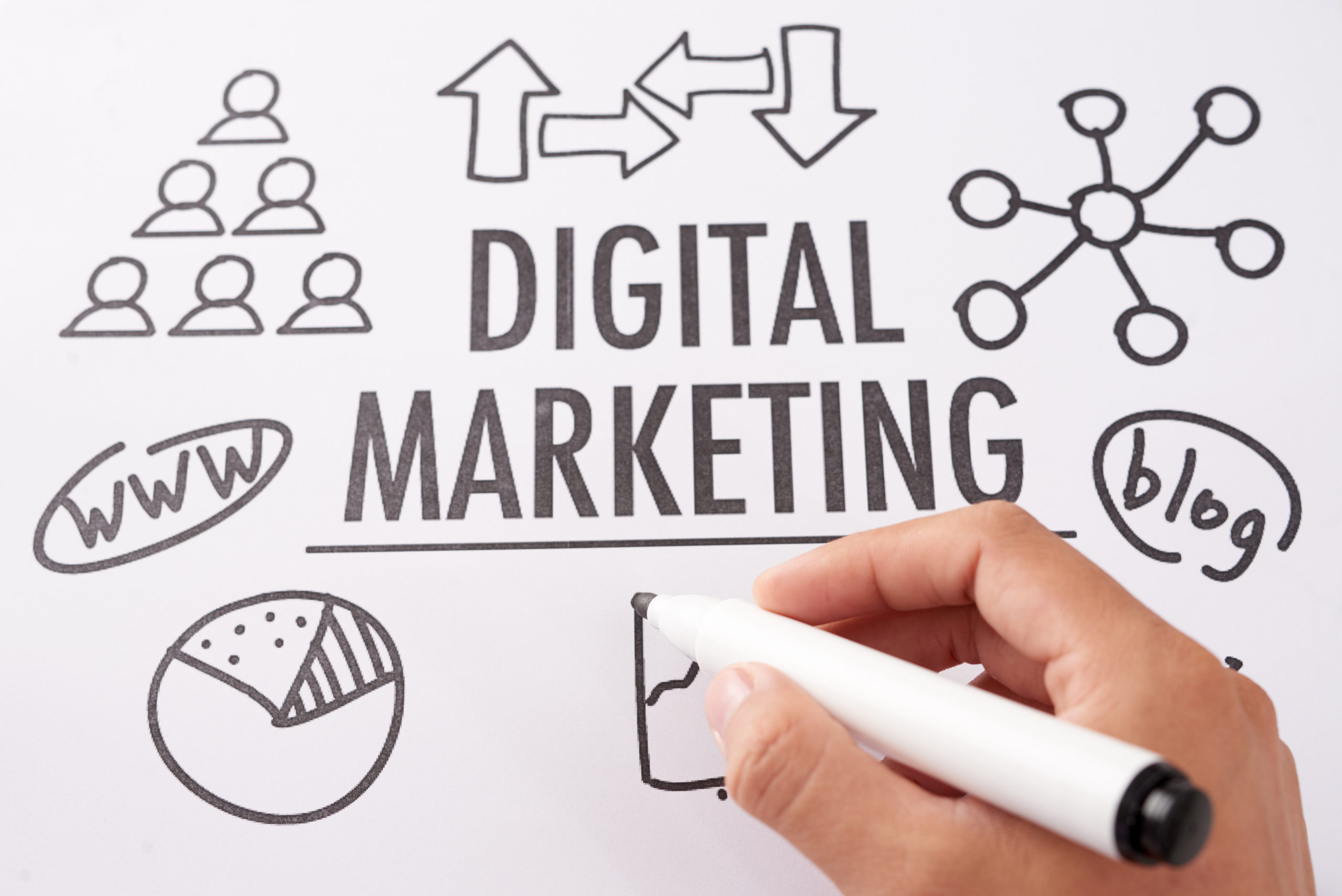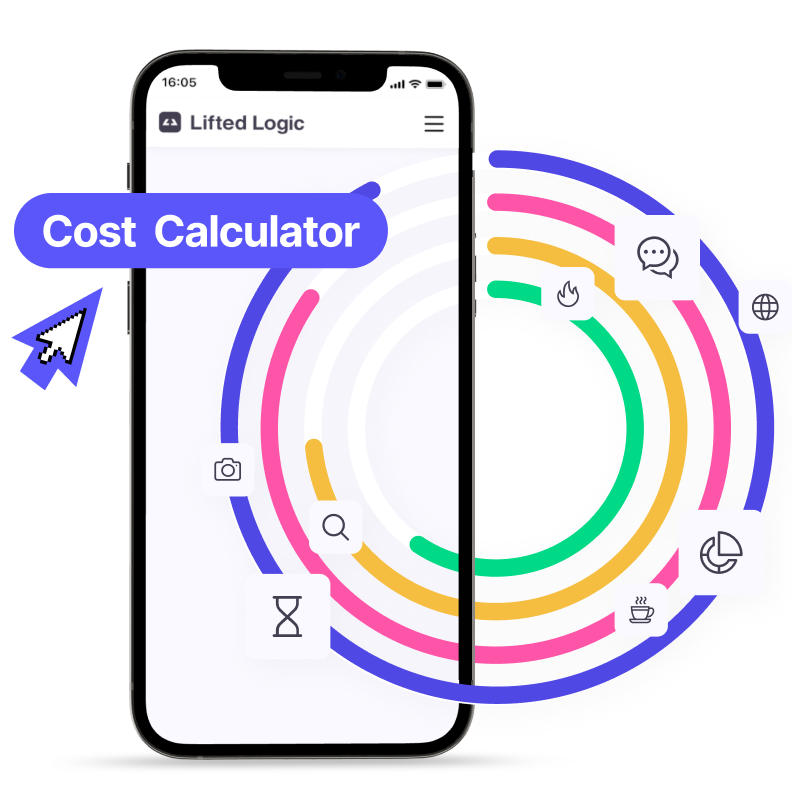You know what you should leave in 2019? A guess-and-go marketing strategy (which actually isn’t a strategy at all). Learning how to create a 2020 marketing plan may seem like a daunting task, but we promise it’ll be worth it in the end.
Don’t know where to start?
Our marketing experts at Lifted Logic have created a step-by-step guide to help you jumpstart your marketing efforts. Lifted Logic is the premier digital agency in Kansas City that helps companies across the country create effective and profitable marketing plans.
Why you really, really, really need a marketing plan
Here’s the honest to goodness truth: behind all great businesses is an equally great marketing plan. That means, you can’t just throw out ideas and techniques without a real purpose in mind. You’ll just be shooting in the dark.
Actually, let’s think about that.
Say you had a target to hit, but it was pitch black. What would happen? Obviously, you’re going to miss, and if you actually hit the target, you can try to attribute that to your years of expertise in archery, your jedi-level sense of direction and depth, or your night-vision goggles (which can we borrow by the way?). At the end of the day, though, it’s hard to say whether or not it was just plain old luck.
Running a business should never be left to luck. You’re spending money on your marketing efforts, so wouldn’t you want to get even more money back as a result? If your answer is no, reread the question, because you probably read it wrong. Remember, the whole point of marketing is to help sell your products and/or services so your business can make a profit.
Step #1: Understand your business objective
You can’t even begin to create a marketing plan without a business objective. Seriously, don’t try it. Marketing efforts should correspond with your business objective, not its own, separate entity.
Now onto the nitty gritty.
The main question you should be asking is, “what are my company’s goals for 2020?”
Be specific. Don’t just say “to make money.” That’s a given; we all want to make money. So, what else you got?
Take a step back and look at what happened last year. What worked? What didn’t work? Why?
What can you improve? Where are you now and where do you want to be by the end of the year? Once you answer these questions, you can fill in the gaps of what your business needs to create a well-thought-out business objective.
Before you go grabbing your special ideas notebook and a pen, be sure not to rush this process. Really take the time to gain full awareness of your company and its goals. If you don’t have a full grasp, keep pushing until you do.
Some examples of business objectives are:
- Increasing productivity by X%
- Converting more digital leads than the previous year (BTW, the websites we build convert between 24 and 56%)
- Monitoring and boosting customer satisfaction
- Maintaining sustainable revenue growth
- Revamping branding and image
- Expanding audience reach to a new target market
Step #2: Create marketing goals

Quick question. Why does your business currently market the way that it does?
So many times, we’ve seen our clients stick to the same marketing strategy simply because that’s what they’ve always done. While we’re huge advocates of not fixing things that aren’t broken, if your current marketing plan isn’t building revenue, it’s time to face the truth — it’s broken.
Okay, so how do I fix it?
You need to be smart. Actually, let’s clarify. Your marketing goals need to be S.M.A.R.T.
We know, we know. You’ve probably heard the acronym a million times already, but that’s just because it’s so important.
S – Specific
A general goal isn’t going to do you much good. An example is “Our company wants to sell more products.”
That’s great, but let’s make that more specific. Instead try, “Our company wants to sell more of our new anti-aging skin creams.”
This is only a start. Let’s keep going.
M – Measurable
Your marketing goals should be measurable, meaning you should be able to create a quantitative or qualitative metric.
Going back to our example…
As of now, we have the goal: “Our company wants to sell more of our new anti-aging skin creams.” To make it measurable, let’s say we want to sell 20,000 creams to make the goal, “Our company wants to sell 20,000 of our new anti-aging skin creams.”
A – Achievable
A marketing goal shouldn’t be so outlandish that there’s no way to achieve it. For example, if you don’t have the manpower, equipment, or finances to achieve a goal, you should probably change it so that it’s something that’s feasible for your company.
R- Realistic
Going along with achievable, your goal should also be realistic. Everyone has big dreams, but some just might be too big (for now). Say you’re a small start-up skincare company that usually sells 500 anti-aging creams a year. Depending on your growth, jumping to 20,000 for the next year might not be a very realistic goal.
T – Time bound
Your goals should have a deadline. If not, who’s to say you won’t keep putting them off? Adding a time constraint can help you monitor your progress and make necessary changes along the way.
To finish off our example, a S.M.A.R.T. goal should look something like this: “Our company wants to sell 20,000 of our new anti-aging creams by the end of the second quarter.”
Take some time to create your own S.M.A.R.T. goal, then come back to us because there’s more to learn about how to create a 2020 marketing plan.
Step #3: Find your target audience
First off, throw away the idea that a marketing plan is all about you and what you need. You and your business isn’t what’s important here. The customer is. So it’s time to get into your customers’ heads.
One of the best ways to start is by looking at your current customers. Who are they? What are their demographics (age, gender, annual income, marital status, education level, etc.)? What do they want and need? These answers will give you insight to start building a buyer persona.
Uh… a buyer what?
We’ll explain. A buyer persona is a somewhat fictional person who represents your target audience. Plus, you can create multiple buyer personas based on marketing segmentation (dividing your audience into subcategories based on similar characteristics).
To create your buyer persona, keep in mind some of these questions:
- How does this person see your product or service?
- What kind of problems does this person have?
- How does this person find answers to the problem?
- What does this person’s spending habits look like?
- What kind of websites does this person visit?
- Where does this person shop?
Have fun with your buyer persona. You can even give the person a name if you want. The goal is to be able to understand your audience as much as possible so that you can cater your marketing efforts to them. If you’re not marketing to your target audience, there’s really no point.
Step #4: Choose your marketing strategies

You have your goal and have discovered your target audience, so now it’s time to choose the marketing strategies for your marketing plan. The only way to truly do this is to understand the types of strategies that are around.
At the most basic level, there are two main types of marketing.
- Outbound marketing, and
- Inbound marketing.
Outbound marketing is what you think of as traditional marketing, meaning, you’re initiating contact with a potential customer. This includes techniques like advertising (social media, display ads, etc.), direct mail, and email blasts.
On the other hand, inbound marketing is all about the customer finding you. At its core is content, including web content and blogging (Lifted Logic can help with that!). Technically paid search falls into this category since the customer still has to find you… but we’ll go into this more later.
Content marketing
What’s the big deal about content anyway?
Content is what drives us. People want answers, and they want answers fast. With content, you can expand your company’s reach by being the go-to source for information on topics in your industry. In fact, content marketing costs 62% less than traditional marketing and 82% of consumers feel more positive about a company after reading custom content.
Examples include:
-
- Blogging
- Podcasts
- Videos
- Infographics
- White pages & e-Books
Search engine optimization (SEO)
Oh, SEO. So simple, yet so complex. You probably already know that SEO is incredibly important for a successful website and business, but why?
Remember when we said people want answers? Well how do you think they get those answers? They use search engines like Google, Bing, and Yahoo.
With SEO, you ensure that potential customers find you based on what they’re searching for. The basic idea is this: people type keywords or phrases into a search engine. Your goal is to figure out what keywords they’re using (hello, keyword research) to optimize your content and website.
PPC/Paid search
Pay-Per-Click (PPC) advertising is literally just what it says — you pay a certain amount of money per click of an ad. One of the most popular versions of paid search is Google Ads.
Here’s how Adwords works:
The goal is to rank high to get your ads on the top of a search engine results page (SERP). Your ad rank is a result of your cost-per-click (CPC) bid multiplied by your quality score.
CPC bid x quality score = ad rank
How to Improve Your Google Ads Quality Score →
Your CPC bid is the max amount you want to pay per click, and your quality score involves how relevant your ad is to the user.
Now, visualize a SERP and imagine there are three ads. Say your ad ranked first, and you’re at the top of the list. Your final CPC (how much you pay per click) would be the ad rank of the person below you divided by your quality score, then you would add one cent.
Ad rank of person below you ⁒ quality score + $0.01 = CPC
The great thing about PPC and paid search is that it pulls customers in faster than organic SEO does. It also ensures quality leads, since people are already searching for what you’re offering.
PPC 101: What is Paid Search Marketing? →
Social media
If you’re not using social media, we just have one question — why not?
We’re not shy about the fact that for the last 10 years, we’ve been shy about social media. That’s because we did not typically see a direct correlation between social media engagement and revenue… until now.
It’s no secret that social media has grown exponentially in the past years. In 2005, only about 5% of Americans used social media, and by 2011 that number jumped to 50%. Now a whopping 72% use some kind of social media.
Social media is a low-cost way to reach a large audience. You can either do organic posts to engage with your followers, paid social media advertising, or a mix of both.
When making your 2020 marketing plan, make sure you use your audience research to figure out what social media platforms your target audience is using.
Email marketing
Whoever said email is dead is just dead wrong. Truth is, 99% of consumers check their email daily and 50% check their email more than 10 times a day.
Email marketing is a great way to build a strong rapport with current customers, share new content, offer unique specials, and even give quick industry insights.
One of our longest-running clients can now attribute about 30% of their online conversions directly to their newsletter list. Why? Because you’re engaging people who know you and your brand, and want to know more.*
*Hopefully without spamming the sh*! out of them. (We could go on about this all day, but we’ll spare you.) When looking for information about email marketing statistics or other email marketing tips in 2020, it’s easy to get lost in the sea of information available on the internet. If you have any questions, be sure to ask your friendly neighborhood marketing agency! We’re always happy to talk shop, strategize, and help you make the right decisions for your email marketing and any other platforms you aren’t sure about.
Step #5: Establish your message

Your message is one of the most important parts of a successful marketing plan. Think of your message as a story. Every good story has three main components: characters, conflict, and resolution.
Characters
When we say characters, we don’t mean to literally make up characters. Your main character should be your audience. When your audience is part of the story, they’ll be more likely to engage with it. And guess what? Engagement turns into leads and conversions.
Conflict
The conflict is a problem your audience faces. Go back to your buyer persona to figure out what those “conflicts” are. You want your message to speak to their needs. Let them know you have a solution.
Resolution
This is where your product and/or service comes into play. If done correctly, what you sell will be the perfect resolution for your audience’s conflict. For example, no one cares that your anti-aging cream is the “best in the market” because you said so. At the core, people aren’t just buying an anti-aging cream, they’re buying a way to fight the signs of aging before they appear.
Step #6: Budget
Why is budget all the way down here? Shouldn’t that go first?
No, no it shouldn’t. Here’s why.
In marketing, letting budget run your marketing plan is an “inside-out” approach, meaning you’re using your assets to guide your steps rather than the value of your customer. Your focus is on your needs, and you ignore the needs of your audience. This could lead you to create a 2020 marketing plan that is completely irrelevant to your customers.
That’s why we put budgeting toward the end. Once you have all the above pieces established, you can best determine how much spend is necessary to reach your goal. Sometimes you may have to use one less marketing strategy than you’d want, but at least you’ll be putting your customers first.
Step #7: Decide how you’re going to track your efforts
Tracking your efforts is incredibly important for understanding whether your 2020 marketing plan is working or not. Without tracking, you won’t have a guide.
Take a look at your web analytics. How long are people staying on each page? Are your PPC landing pages matching up with your audience’s needs?
You can also use analytics to see how your organic marketing efforts are going. Are you showing up on SERPs? How are people finding your content?
The digital world makes it so much easier to track your marketing campaigns so that you can stay on top of the success of your marketing efforts.
Need help implementing your 2020 marketing plan? Lifted Logic can help!
Let our marketing gurus at Lifted Logic turn your marketing plan to reality. We offer a wide range of digital marketing services in Kansas City and across the country, including blogging, copywriting, social media advertising, PPC, and more!
Stop by our office for coffee and we’ll discuss everything we can do to help ensure your business grows and succeeds for years to come.
Get in touch with our team by calling 816.298.7018 or use our cost calculator tool today!





